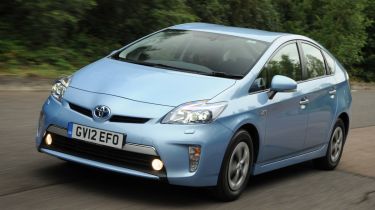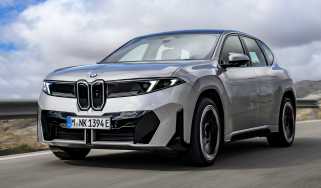Toyota Prius Plug-in
New plug-in tech and batteries make hybrid greener than ever
The Prius is a global sales phenomenon – but the new Plug-in breaks no new ground. Its spacious cabin is looking dated now and the limited electric range means you are forced to use the engine too often to make the promised fuel savings. Urban drivers would be better off with the standard car, which is lighter and cheaper to buy.
In the first three months of 2012, the Toyota Prius was the second best-selling car in the world. This sales success has taken years to build up, but the first-ever mass-market hybrid can’t sit back and relax, because it’s now under threat from a new type of low-CO2 car.
Gunning for the title of most efficient model in town are the latest range-extending electric cars like the Ampera. With a hi-tech combination of lithium-ion batteries and a small petrol generator, it aims to make conventional hybrids obsolete – so Toyota has launched this plug-in model to help ensure that the Prius stays competitive.
It swaps the nickel-metal hydride batteries of the standard car for more energy efficient – and expensive – lithium-ion cells, which have increased the all-electric range from 1.2 miles to a maximum of 15.5 miles.
Used - available now

2020 Toyota
Prius
62,500 milesAutomaticPetrol1.8L
Cash £18,195
2020 Toyota
Prius
41,626 milesAutomaticPetrol1.8L
Cash £17,495
2012 Toyota
Prius
40,651 milesAutomaticPetrol1.8L
Cash £11,405
2020 Toyota
Prius
45,177 milesAutomaticPetrol1.8L
Cash £22,295In engineering terms this marks a major step forward, but from the outside at least you would be very hard-pressed to tell this new version apart from the standard car.
There are tell-tale signs of the new tech, like the small badges on the wings and bootlid, plus chrome strips along the grille and silver door handles. But the most obvious difference is two fuel filler caps: one for the petrol tank, the other for the electric charging socket.
Inside, the simple layout will be familiar to owners of the current car. The absence of conventional dials, and features like the head-up display and energy monitor, used to make the Prius feel futuristic. Compared with the clear, colour LCD screens in the Ampera, its flat 2D graphics look dated.
Still, the centre console has a logical, easy-to-use layout, and the switchgear feels more robust than it does in the Vauxhall, even if some of the textured plastics used in the cabin look and feel disappointingly cheap.
However, the Prius has lost none of its practicality, and this gives it an edge over the more compact Ampera. The high driving position and glass inserts inside the A-pillars ensure forward visibility is excellent, and the cubbies underneath the centre console and spacious double glovebox both mean that stowing loose items is no trouble at all.
There are three proper seats in the back and, thanks to its longer wheelbase, rear legroom is better than the Vauxhall’s. Despite the new battery packs, the boot retains its impressive 443-litre capacity with the seats in place, although the light fabric lining does get grubby very quickly.
However, all of this everyday usability won’t be enough to clinch victory for the new Prius if it can’t emulate the Vauxhall’s refinement and fuel efficiency on the road.
Guide it gently around town and the car stays in all-electric mode. As long as you’re careful with the throttle, progress is smooth and relaxed, too. Three buttons on the dash let you switch between hybrid and EV modes, and a ‘City’ EV setting that means the engine only takes over when absolutely necessary.
Once the petrol engine fires up, the car feels frustratingly like the standard model. Press the throttle hard and the CVT gearbox keeps the revs artificially high, which has a negative impact on economy and shatters the hush created in EV mode.
Even with the 1.8-litre engine working hard, acceleration is leisurely (the Prius was a second slower from 0-60mph than the Ampera, with a time of 10.4 seconds), and there is more wind and road noise than in its rival. Light controls make it easy to drive, but the ride is firm, and the sharp initial response of the regenerative brakes takes time to get used to.
A limited battery range also means the engine is used more than the Vauxhall’s generator and, although a full charge takes only 90 minutes from a domestic socket, you will need to do this often to reap the benefits.
Toyota claims the car will still return 84mpg in hybrid mode, but we managed just 51mpg on our mixed test route. So while the Prius Plug-in can’t match the Ampera’s economy, it’s much cheaper to buy and better equipped. Will that be enough to sneak a win in this test?


